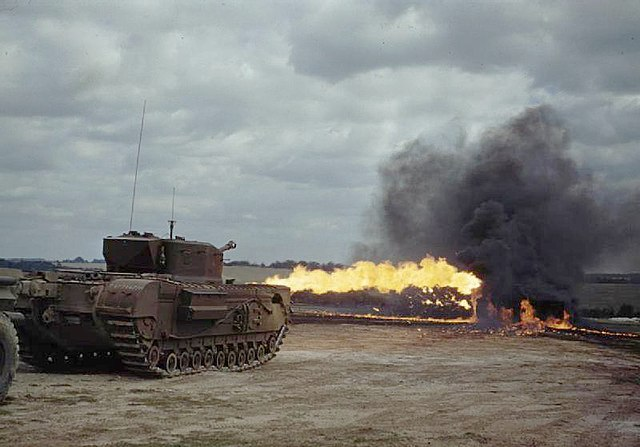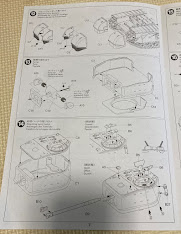The Churchill Crocodile was a specialised
variant of the British Churchill tank used during World War II. It was equipped
with a flamethrower system known as the ‘Crocodile’ And which gave the variant
its name. It was designed primarily for the purpose of providing close support
to infantry by projecting a stream of fire towards enemy positions.
The Crocodile flamethrower system consisted of
a large fuel trailer towed behind the Churchill tank. The trailer contained a
substantial amount of fuel, typically around 400 gallons (1,818 liters), which
was pressurized by a gas generator mounted on the tank. The fuel was expelled
through a long, flexible hose attached to the tank's turret, terminating in a
nozzle mounted on the hull front.
The range of the Crocodile flamethrower system was relatively short, typically around 120 yards (110 meters), but it was highly effective in close-quarters combat. The intense heat and fire it produced were capable of clearing enemy infantry from fortified positions, buildings, and trenches. The psychological impact of facing the flamethrower was often significant, making it a potent weapon for breaching enemy defenses and providing support to advancing troops.
In addition to the flamethrower, the Churchill
Crocodile retained its original armament, typically a 75mm main gun and machine
guns, allowing it to engage enemy armor and infantry when not using the
flamethrower.
The Churchill Crocodile proved to be a valuable asset in several major Allied operations, including the Normandy landings and the subsequent campaign in Northwest Europe. Its ability to rapidly clear enemy strongpoints and fortifications made it an effective tool in urban combat and defensive battles.
It's worth noting that the Churchill Crocodile
was not a widely produced variant, and its deployment was relatively limited
compared to other Churchill tank versions. Nevertheless, its distinctive
flamethrower system and its impact on the battlefield make it an interesting
and notable part of World War II history.
















































Comments
Post a Comment